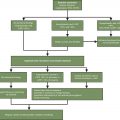Introduction
- ■
Anemia is caused by the deficiency of red blood cells or hemoglobin, resulting in a reduction in the oxygen-carrying capacity of blood and is commonly associated with cancer-directed therapies. Chemotherapy, radiotherapy, and cancer-related surgery can all contribute to anemia. Despite being common, anemia associated with chemotherapy (CIA) is often underreported and is often only documented when severe, necessitating transfusion. There are several reasons for this; however, the most important is the lack of treatment options for mild anemia. There is also a lower perceived clinical importance of CIA compared with neutropenia or thrombocytopenia.
- ■
CIA results in functional impairment and reduction of quality of life. Fatigue associated with anemia can have considerable implications on the physical, psychosocial, and economic and occupational aspects of patients’ and their families’ lives. Studies have demonstrated a clear correlation between hemoglobin levels and the severity of cancer-related fatigue, and quality of life. Some studies have reported an incidence of 80% to 100% for fatigue in patients undergoing chemotherapeutic treatment for their malignancy. , Fatigue associated with anemia due to chemotherapy regimens can cause some patients to discontinue treatment altogether. Despite its prevalence and complications, fatigue is often left undiscussed and untreated in cancer patients.
- ■
Anemia is an adverse prognostic marker in patients with several malignancies. Radiotherapy and some forms of chemotherapy depend on adequate tissue oxygen levels for their action, and their efficacy can be impaired by anemia. Anemia is also associated with increased susceptibility to thrombocytopenic bleeding and decreased overall survival. Symptoms of anemia can be manifold with effects in virtually all organ systems.
- ■
Some cancers are associated more with anemia than others ( Table 3.1 ). For example, lung, breast, and ovarian cancers are associated with some of the highest incidences of anemia. More advanced stages and longer durations of cancer are also associated with more severe anemia.
TABLE 3.1■
Prevalence of Anemia by Cancer Type
Type of Cancer
Studies (n)
Prevalence (%)
Lung
5
8–84
Colon
8
30–67
Breast
3
41–82
Prostate
3
5–32
Head and Neck
4
16–65
Larynx
1
21
Kidney
1
39
Ovary
2
26–85
Cervix/Uterus
3
67–82
Grading of Anemia
- ■
The grading scheme of anemia is generally rated on a scale from 0 to 4, from normal hemoglobin to life-threatening anemia. In clinical trials, the Common Terminology Criteria for Adverse Events (CTCAE) is commonly used, and is described in Table 3.2 .
TABLE 3.2■
Common Terminology Criteria for Adverse Events (CTCAE) Grading System
CTCAE Grade
1
2
3
4
5
Criteria
Hgb > 10 g/dL
Hgb 8–10 g/dL
Hgb < 8 g/dL; transfusion may be indicated
Life-threatening consequences; urgent intervention indicated
Death
- ■
The grading of anemia based on the hemoglobin level is useful because it helps determine if patients require transfusions. However, a major drawback of these grading systems is that they do not correlate anemia with clinical presentation, such as fatigue.
Agents Causative of Anemia
- ■
There are many agents associated with anemia. In terms of malignancy, the type, stage, and duration of malignancy all play a role. Similarly, in terms of chemotherapy, the type, intensity, and duration of chemotherapy are all correlated with the level of anemia ( Table 3.3 ). Specifically, among therapies, platinum-based therapies are notorious for causing anemia.
TABLE 3.3■
Incidence of Anemia With Different Chemotherapeutic Agents and Regimens
Chemotherapy Drug/Regimen
Grades 1–2 (%) a
Grades 3–4 (%) a
Cisplatin
–
11
Docetaxel
73–85
2–42
5-FU
50–54
5–11
Paclitaxel
93
7
Topotecan
67
32
Vinorelbine
67–71
5–14
Cisplatin–cyclophosphamide
43
9
Cisplatin–etoposide
59
16–55
Etoposide–ifosfamide–cisplatin
–
52
5-FU–carboplatin
42
14
CHOP
49
17
Paclitaxel–doxorubicin
78–84
8–11
Paclitaxel–carboplatin
10–59
5–34
Imatinib
80
10
Sunitinib
26
–
Sirolimus
–
9 
Stay updated, free articles. Join our Telegram channel

Full access? Get Clinical Tree





